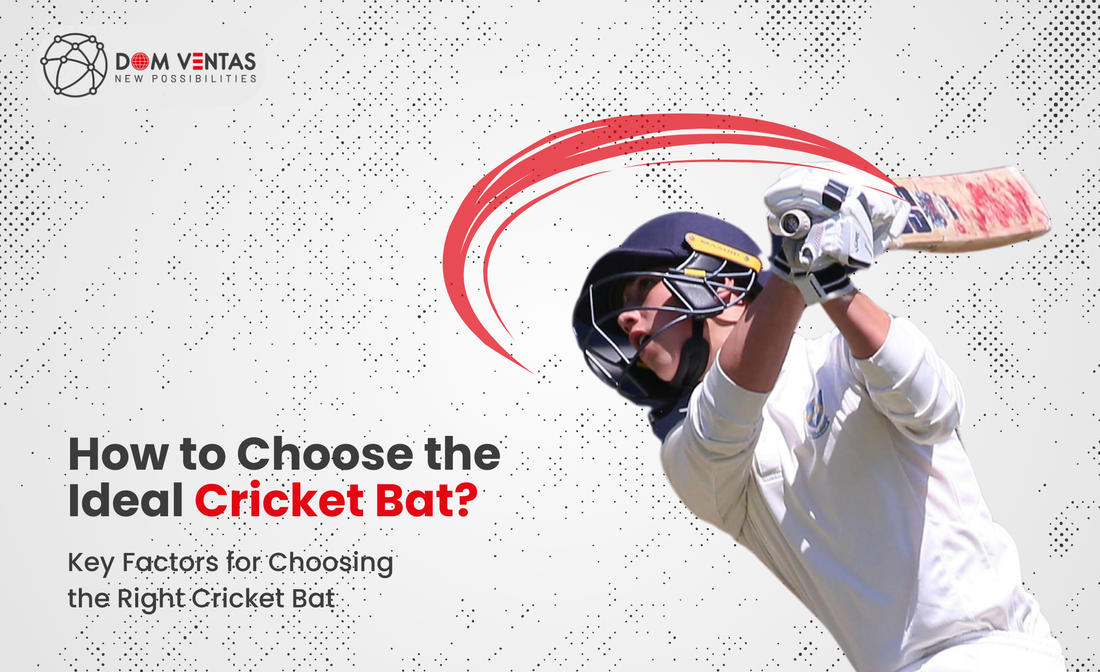
How International Cricketers Choose Their Cricket Bat: Key Factors for Choosing the Right Cricket Bat
Choosing the perfect cricket bat is an important decision for any batsman, much like choosing a reliable partner on the field. Without proper advice and information, this process can be overwhelming. A well-chosen bat will enhance performance, boost confidence and provide longevity in the game.
Here are 7 crucial factors to consider when choosing a cricket bat: bat length, weight, rebound, grain, pick-up and balance, sweet spot and material. Let's take a closer look at each factor so you can make an informed choice tailored to your playing style.
- Bat Length & Width
International regulations dictate that a professional cricket bat must be no more than 38 inches long and no more than 4.25 inches wide, with a blade depth of no more than 2.64 inches and edges no thicker than 1.56 inches. Most players opt for a bat around 35 inches long, but taller players may prefer longer bats.
To find the right fit, make sure the cricket bat ends just below your waist when standing. Test the comfort by holding the bat horizontally at arm's length.

2. Recoil
Rebound is an important indicator of a cricket bat's performance. High rebound allows for better shot execution and a higher run rate. To test, hit the sweet spot of the bat with a wooden mallet with loose hands. A good bat will have a quick and noticeable springy rebound.

3. Grains
The grain of a cricket bat reflects the age of the tree from which it is made and affects its responsiveness and durability.
Cereal Guidelines:
5-15 Grains: Ideal range that offers a balance between responsiveness and durability.
Less than 5 grains: Softer wood, less reactive.
More than 15 grains: Harder wood, less durability.

4. Sweet Spot
The sweet spot of a cricket bat is the area where the ball strikes most effectively. This determines the power, control and execution of the bat.
Profiles that match your style:
Low profile: For rearfoot players.
Medium profile: Balanced option, suitable for most players.
High profile: For aggressive play with the forefoot.

5. Collection & Settlement
Shot and balance are critical to control and ease of use. To test, hold the club perpendicular to the body in your left arm (for right-handed players) for at least a minute. If it feels effortless, it's the right choice.

6. Weight of the bat
Cricket bats range in weight from 450g to 1200g. Beginners often start with lighter bats, while professionals can use both depending on their needs.
Lightweight bat pros and cons:
Advantages: Fast movement, better timing, ideal for precision shots.
Disadvantages: Limited distance shots, less effective against strong bowling attacks.
Heavyweight Bat Pros & Cons:
Advantages: High power for aggressive shots, ideal for boundary hitting.
7. Grade
The quality of the cricket bat indicates what type of wood is used for making the bat. There are mainly two types of wood used English Willow & Kashmir Willow.
Cricket bats are graded according to the quality of the willow used, which determines its performance, durability and visual appeal. There are mainly two types of willow used: English willow and Kashmir willow. English willow is preferred by professional players as it is known for its light weight, fibrous structure and high hitting power. It is further divided into grades. Grade 1+ is the finest, with straight grains, minimal flaws and unmatched performance. Grade 1 is slightly poorer but still excellent, with minor cosmetic defects. Grades 2 and 3 have more visible knots and grains and perform well for semi-professionals and amateurs. Grade 4, often bleached, is inexpensive and best suited for beginners.
Kashmir willow, a denser and harder wood, is more affordable but does not have the same power and responsiveness as English willow, making it ideal for beginners and recreational players.
All of these factors play an important role in determining the right cricket bat for your needs. Assessing your playing style and preferences will help you choose a bat that will improve your game and boost your confidence on the field. Remember, the right bat is not just a tool, it is an extension of the player. Choose wisely!

